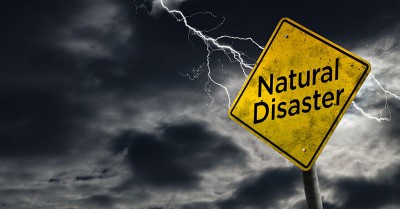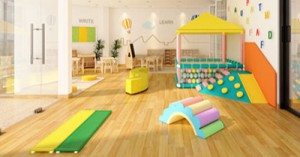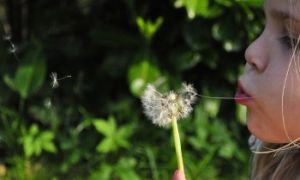More natural disasters affect Queenslanders than any other state in Australia. Early childhood services should be ready for bad weather. Thus, it's critical to prepare. The following article provides information on Notifying Of A Closure, Storms and Cyclones, During The Storm, Preparing For Extreme Weather and more.
If your service is affected by a cyclone, bushfire or any other natural disaster and a decision is made to close, approved providers must notify the Regulatory Authority of the service’s closure as per National Regulations.
Notifying Of A Closure
Approved providers decide to close and re-open their early childhood education and care (ECEC) service/s and are required to notify the department within 24 hours of the service closing.
Please notify the department of service closures via the National Quality Agenda (NQA IT System).
The NQA IT System is an online tool that offers providers a secure and convenient way of communicating with the department as the ECEC regulatory authority.
Please phone your local regional office if you lose internet access and staff will enter the notification for you. You may wish to save your local regional office phone number on a mobile phone beforehand.
Storms and Cyclones
Tall trees near your service should be checked by an arborist to ensure they can withstand the combination of strong winds and wet soil, and any overhanging branches should be trimmed.
As a major storm approaches, playgrounds should be cleared of loose items such as play equipment, toys and furniture.
Inside, electrical equipment should be disconnected and stored away from windows.
Depending on the severity of the event, families may need to be contacted and asked to collect their children.
During The Storm
Children who cannot be collected before the storm should be entertained in a safe location indoors with quiet activities such as reading, drawing and using playdough.
A staff member should be tasked with collecting blankets, drinks, food, nappies, formula and cuddly toys to ensure the children feel safe and secure.
In case of emergency or if the situation is life-threatening, phone 000.
If there is damage to buildings, phone the State Emergency Service (SES) on 132 500. For disruptions to power and water supply, visit disasters and alerts.
Preparing For Extreme Weather
Now is the time to get ready for natural catastrophes like bushfires and other natural disasters, including updating emergency and business continuity plans, preparing an emergency kit, and knowing the dangers. This is because Queensland experiences harsh and unpredictable weather.
Queenslanders are advised to create a plan for surviving wildfires and be aware of the dangers An external connection.
To lessen the possibility of embers catching fire and to allow stormwater to drain rapidly in the event of inclement weather, make sure that the roof, gutter and downspouts on your property are clear of leaves.
Your service will need a comprehensive first aid kit as well as an emergency kit containing the following items:
- wide masking tape for windows
- battery-powered radio tuned to your local ABC station for emergency updates
- torches with spare batteries
- charged mobile phone and a hardcopy list of family contacts
- phone numbers for emergency services
- large garbage bags for emergency rain protection.
Incident and Emergency Management
Services need to make sure that their evacuation and emergency plans are up to date and that parents are informed of any modifications.
Review and practise your emergency and evacuation plans on a regular basis at all authorised education and care facilities.
This will lessen the possibility of harm or injury by assisting staff members and educators in handling emergencies calmly.
Owing to the inescapable nature of emergency and evacuation scenarios, pertinent rules and procedures ought to be adequately comprehensive and comprehended to enable every employee to respond with assurance and carry out their assigned responsibilities in an emergency.
Every three months, emergency and evacuation policies and procedures need to be practiced and documented in order to be both legally compliant and functional.
Supporting Children Before And After A Disaster
Children's Health Queensland has developed a range of storybooks for children on natural disasters and viruses including storms, floods, fires etc. The stories are designed to help children cope with emotionally distressing events.
Birdie Storybooks On Natural Disasters
You can also share with your families what you have done to prepare for a natural disaster, including evacuation procedures and how they will be notified if they need to collect their child. This can help ease their minds if they can't immediately be with their child during a weather event.
Reference:
Is Your Service Prepared For Cyclones And Other Natural Disasters, Early Childhood Queensland







 As an Educator in Australia, your pay rate falls under the Children’s Services Award 2010. This award states the minimum amount that an employer can
As an Educator in Australia, your pay rate falls under the Children’s Services Award 2010. This award states the minimum amount that an employer can When working as a qualified Early Childhood Teacher (with a university degree) within a service, your rate of pay will come from the Educational Services
When working as a qualified Early Childhood Teacher (with a university degree) within a service, your rate of pay will come from the Educational Services When working as a Diploma Qualified Educator your pay rate is from the Children's Services Award 2010. This Award states your minimum rate of pay
When working as a Diploma Qualified Educator your pay rate is from the Children's Services Award 2010. This Award states your minimum rate of pay When working as a Cert 3 Qualified Educator, your pay rate is from the Children's Services Award 2010. This Award states your minimum rate of
When working as a Cert 3 Qualified Educator, your pay rate is from the Children's Services Award 2010. This Award states your minimum rate of Educational Leaders play a crucial role in their early childhood service by ensuring that the educational program aligns with best practices and supports the holistic
Educational Leaders play a crucial role in their early childhood service by ensuring that the educational program aligns with best practices and supports the holistic In early childhood education and care, ratios are more than a technicality—they are a frontline safeguard. Every child deserves responsive supervision, emotional connection, and developmental
In early childhood education and care, ratios are more than a technicality—they are a frontline safeguard. Every child deserves responsive supervision, emotional connection, and developmental With the new national child safety reforms kicking in on 1 September 2025, early childhood services like yours have a real opportunity to lead the
With the new national child safety reforms kicking in on 1 September 2025, early childhood services like yours have a real opportunity to lead the Here’s a comprehensive Mobile Phone and Smart Watch Policy tailored for early childhood education and care (ECEC) services in Australia, aligned with the latest 2025
Here’s a comprehensive Mobile Phone and Smart Watch Policy tailored for early childhood education and care (ECEC) services in Australia, aligned with the latest 2025 The Sea of Fish Challenge is a national initiative that invites children, educators, families, and communities to create and display fish artworks as a symbol
The Sea of Fish Challenge is a national initiative that invites children, educators, families, and communities to create and display fish artworks as a symbol Across the early childhood education and care sector, educators are sounding the alarm: current staffing ratios are insufficient to deliver safe, meaningful, and developmentally appropriate
Across the early childhood education and care sector, educators are sounding the alarm: current staffing ratios are insufficient to deliver safe, meaningful, and developmentally appropriate


